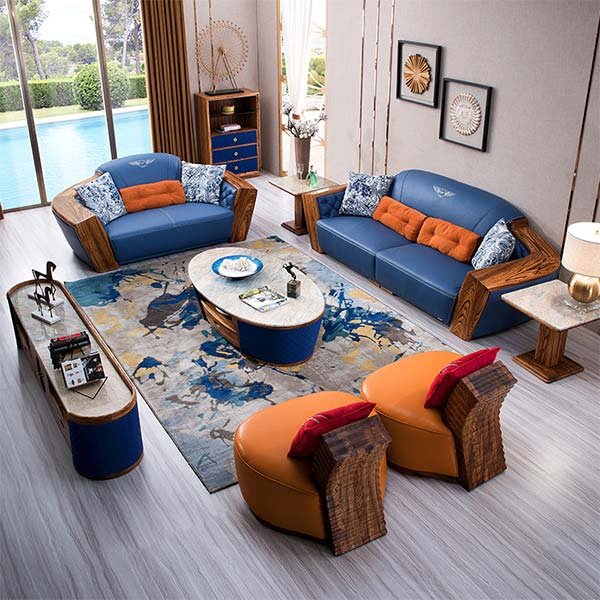“Harmony in Diversity: Mastering the Blend of Wood”
Creating Harmonious Designs: Mixing Wood Types for a Unique Furniture Piece
Insight into the Art of Mixing Different Wood Types in One Piece of Furniture
Creating Harmonious Designs: Mixing Wood Types for a Unique Furniture Piece
When it comes to furniture design, one of the most intriguing techniques is the art of mixing different wood types in one piece. This approach allows designers to create unique and harmonious designs that stand out from the crowd. In this article, we will explore the process of mixing wood types and how it can elevate the overall aesthetic of a furniture piece.
The first step in creating a harmonious design with mixed wood types is to carefully select the types of wood that will be used. Each wood species has its own unique characteristics, such as color, grain pattern, and texture. By choosing woods that complement each other, designers can create a visually appealing and cohesive look.
One popular approach is to mix woods with contrasting colors. For example, pairing a dark walnut with a light maple can create a striking contrast that adds depth and visual interest to a piece of furniture. This technique is often used in modern and contemporary designs to create a bold and dramatic look.
Another approach is to mix woods with similar colors but different grain patterns. For instance, combining a straight-grained oak with a highly figured mahogany can create a visually dynamic piece that showcases the beauty of both woods. This technique is often used in traditional and rustic designs to create a warm and inviting feel.
In addition to color and grain pattern, texture is another important factor to consider when mixing wood types. Some woods have a smooth and sleek texture, while others have a rough and rustic feel. By combining woods with different textures, designers can create a tactile experience that adds depth and dimension to a piece of furniture.
Once the wood types have been selected, the next step is to determine how they will be incorporated into the design. One approach is to use each wood type in a distinct and separate element of the furniture piece. For example, a dining table could have a walnut top and maple legs, creating a visually interesting contrast between the two elements.
Another approach is to blend the wood types together in a more seamless manner. This can be achieved by creating a pattern or inlay with the different woods, or by using a technique called veneering, where thin slices of wood are applied to a base material. This creates a cohesive look that highlights the beauty of each wood type.
In conclusion, the art of mixing different wood types in one piece of furniture is a fascinating technique that allows designers to create unique and harmonious designs. By carefully selecting wood types that complement each other in terms of color, grain pattern, and texture, designers can create visually appealing and cohesive furniture pieces. Whether it’s through contrasting colors or blending textures, the possibilities are endless when it comes to mixing wood types. So, the next time you’re looking for a unique furniture piece, consider the art of mixing different wood types for a truly one-of-a-kind design.
Exploring the Aesthetics: How to Combine Different Wood Species in Furniture Design
Insight into the Art of Mixing Different Wood Types in One Piece of Furniture
Exploring the Aesthetics: How to Combine Different Wood Species in Furniture Design
Wood has been a popular material for furniture for centuries, and its versatility allows for endless possibilities in design. One way to create unique and visually appealing furniture is by mixing different wood types in one piece. This technique adds depth, contrast, and interest to the overall aesthetic. In this article, we will delve into the art of combining different wood species in furniture design.
When it comes to mixing wood types, there are a few key factors to consider. First and foremost, it is important to choose wood species that complement each other in terms of color and grain pattern. For example, pairing a light-colored wood with a darker one can create a striking contrast. Similarly, combining woods with different grain patterns can add visual interest and texture to the piece.
Another important consideration is the overall style and design of the furniture. Mixing wood types can enhance the design and bring out certain elements. For instance, using a darker wood for the legs or frame of a chair can create a sense of stability and grounding, while a lighter wood for the seat or backrest can add a touch of elegance and sophistication.
In addition to color and design, it is crucial to think about the durability and strength of the wood species being used. Some woods are naturally more durable and resistant to wear and tear, making them suitable for high-traffic areas or pieces that will be subjected to heavy use. By combining different wood types, you can take advantage of the unique properties of each species and create furniture that is both aesthetically pleasing and functional.
One popular technique for mixing wood types is creating contrasting accents or inlays. This involves using a different wood species to create decorative elements such as borders, patterns, or motifs. These accents can be subtle or bold, depending on the desired effect. They can add a touch of elegance and sophistication to the piece, making it truly one-of-a-kind.
When it comes to actually combining different wood types, there are several methods to consider. One option is to use solid wood pieces of different species and join them together using traditional woodworking techniques such as dowels or mortise and tenon joints. This method requires precision and skill but can result in a seamless and visually appealing final product.
Another approach is to use veneers or laminates. Veneers are thin slices of wood that are glued onto a substrate, while laminates are thin layers of wood that are bonded together. These techniques allow for more flexibility in terms of design and can create intricate patterns and textures. However, it is important to choose high-quality veneers or laminates to ensure durability and longevity.
In conclusion, mixing different wood types in one piece of furniture is an art form that requires careful consideration of color, grain pattern, style, durability, and joining techniques. By combining different wood species, designers can create furniture that is visually stunning, unique, and functional. Whether it’s contrasting accents or seamless joinery, the possibilities are endless. So, next time you’re looking to add a touch of sophistication and creativity to your furniture, consider the art of mixing different wood types.
Mastering the Art of Blending: Techniques for Mixing Wood Types in Furniture Construction
Insight into the Art of Mixing Different Wood Types in One Piece of Furniture
Wood is a versatile and timeless material that has been used in furniture construction for centuries. One of the most intriguing techniques in woodworking is the art of mixing different wood types in one piece of furniture. This technique allows craftsmen to create unique and visually appealing pieces that showcase the natural beauty of various wood species. In this article, we will explore the art of blending wood types and discuss some techniques that can help you master this skill.
When it comes to mixing wood types, there are several factors to consider. The first is the color and grain pattern of the wood. Different wood species have distinct colors and grain patterns, which can create a striking contrast when combined in a single piece of furniture. For example, pairing a dark walnut with a light maple can create a visually stunning effect. It is important to choose wood types that complement each other and create a harmonious overall look.
Another factor to consider is the hardness and durability of the wood. Some wood species are harder and more durable than others, making them suitable for different parts of the furniture. For example, a dense and durable wood like oak or mahogany can be used for the legs and frame of a chair, while a softer wood like pine or cedar can be used for the seat or backrest. By strategically combining different wood types, craftsmen can ensure that their furniture is both aesthetically pleasing and structurally sound.
In addition to color, grain pattern, and durability, it is also important to consider the texture of the wood. Different wood species have different textures, ranging from smooth to rough. By mixing wood types with contrasting textures, craftsmen can add depth and visual interest to their furniture. For example, pairing a smooth and polished cherry with a rough and rustic hickory can create a visually dynamic piece that is both visually appealing and tactilely interesting.
To master the art of blending wood types, craftsmen must also have a good understanding of woodworking techniques. Joinery plays a crucial role in creating furniture that seamlessly combines different wood types. Techniques such as dovetail joints, mortise and tenon joints, and finger joints can be used to securely join different wood pieces together. These techniques not only ensure the structural integrity of the furniture but also contribute to its overall aesthetic appeal.
Furthermore, craftsmen must also have a keen eye for design and proportion. Mixing wood types in furniture construction requires a careful balance of colors, textures, and grain patterns. It is important to consider the overall design of the piece and how the different wood types will contribute to its visual impact. By experimenting with different combinations and proportions, craftsmen can create furniture that is truly unique and visually stunning.
In conclusion, the art of mixing different wood types in one piece of furniture is a skill that requires a deep understanding of wood characteristics, woodworking techniques, and design principles. By carefully selecting wood types that complement each other in terms of color, grain pattern, and texture, craftsmen can create furniture that is both visually appealing and structurally sound. With practice and experimentation, anyone can master the art of blending wood types and create furniture pieces that are truly works of art.
Заключение
Заключение: Исследование показало, что смешивание различных видов дерева в одной мебели может создавать уникальные и привлекательные эстетические эффекты. Это позволяет дизайнерам и производителям мебели создавать уникальные и индивидуальные изделия, которые сочетают в себе различные текстуры, цвета и оттенки дерева. Однако, при смешивании разных видов дерева необходимо учитывать их физические и структурные свойства, чтобы обеспечить прочность и долговечность изделия. В целом, смешивание различных видов дерева в одной мебели представляет интересный и творческий подход к дизайну, который может придать уникальность и индивидуальность любому интерьеру.



